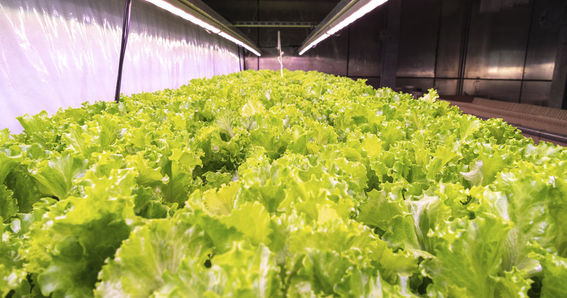Why can’t companies and governments meet sustainability goals – and what can be done?
In the final post of this series, Aalto experts address how our societies can move towards sustainability in the wake of the UN's COP26 climate summit held in November 2021.

With the diplomatic wrangling of COP26 done, the question is: what happens next? Weak or strong, climate pledges are only a starting point, and turning those promises into accomplishments is both challenging and urgent. Researchers at Aalto University have studied the disconnect between climate policy tools and their intended effects, shedding light on the kinds of changes needed for companies and governments to make real progress in sustainability.
‘Creating a sustainable future is about innovation, but innovation at a level that isn't just about convenient technological fixes but about changing some of the economic logic,’ says Minna Halme, professor of sustainability management at Aalto University. ‘Essentially, it’s a question of fundamentally changing our business models.’
Halme studies the factors which drive corporations towards sustainable behaviour and influence their success in seeing it through. ‘There is no magic wand. To solve these problems, many types of pressure need to come from multiple directions, such as regulations and protests or demonstrations, as well as incentives such as decisions about what we buy,’ she says. ‘We also need to change education in universities and vocational schools so that people understand how sustainability is embedded in different disciplines and professions, whether in terms of technologies or business models.’
Business as usual involves intensive resource usage driving economies of scale in a linear economy from resources to waste, explains Halme. This concentrates wealth in the hands of a few people, while others hold on to what they have and try to get wealthier.
‘We can’t keep exploiting nature so that those without enough can get more. At a macroeconomic level, we need to reorganise the economy so its benefits are spread more evenly rather than trickling upwards,’ she says.
In one study, Halme, together with Aalto Senior Lecturer Leena Lankoski and others, identified crucial junctures at which corporate social responsibility measures can fail to bring actual improvements in sustainability. Their analysis revealed not only how things can go wrong but also the factors that lead to a successful sustainability strategy. For example, corporate sustainability measures are more likely to succeed when social responsibility is integrated into the core business, which is easier to accomplish under some leadership structures than others, such as in family business or entrepreneurial companies versus publicly traded corporations.
Old industries and large corporations have significant influence, Halme says, whereas smaller enterprises with innovative, sustainable business models aren’t organised in the same way and don’t have as much lobbying power.
‘Governmental decision-makers should be more courageous in introducing legislation and regulation that favour new, more sustainable business models,’ she says, adding that incentives and regulations have not been sufficiently ambitious.
According to Ewald Kibler, assistant professor of entrepreneurship at Aalto University, another element that’s sorely needed is clarity. Together with Virva Salmivaara, then a postdoctoral researcher at Aalto, he analysed a wide range of policy documents to see how the EU defines and treats sustainable entrepreneurship—and what it means for taking action.
‘We uncovered three different ways in which entrepreneurship is seen in the context of sustainable development,’ Kibler says. The language used makes it unclear whether entrepreneurs should see sustainable development as a pressing problem for them to tackle or simply as an avenue for business opportunities. This creates confusion, providing poor guidance for businesses.
Their analysis showed that in one view, companies are seen as economic beneficiaries of the shift towards sustainability – essentially passive players in the process. In another, they are active, pro-social contributors that drive sustainability by creating new solutions. Companies are also sometimes viewed as opportunistic actors who take advantage of the possibilities offered by the sustainability shift, as when established companies generate more business through the allure of sustainability.
One consequence of the ambiguity and vagueness in these policies and their application is that ‘it allows entrepreneurs to just do what they were already doing while claiming that it contributes on a larger scale,’ explains Kibler. ‘It creates room for everyone, but at the cost of making decisions or really finding agreement on core questions.’
This means that instead of setting a goal or criteria that entrepreneurs and companies should work meet or work towards, these policies merely provide a terminology within which anybody can find their place. As a result, they fail to motivate changes in behaviour.
To move forward, he says, ‘there needs to be some shared understanding that defines common ground and common goals before getting into the specific nuances of something like sustainable entrepreneurship. At a European level, we need to agree about where we want to be in the next few decades before creating guidelines for specific actors. That’s what’s really missing.’
Advancing climate actions in the places we live: Designing cities to store carbon | Aalto Blogs
Simple changes in urban planning can reduce carbon emissions and increase carbon storage, offering tools to help meet emissions targets.
Visit
We could feed ten billion people – research offers paths past the climate crisis | Aalto Blogs
Carbon emissions often dominate discussions about our environment, but feeding our growing population creates broader environmental problems
Visit
Accelerating the global energy transition: Clean energy demands socially just policies | Aalto Blogs
Policy, technology, and practice must be aligned to accomplish the shift to clean energy, say Aalto's experts.
Visit
Delivering the practical solutions needed to adapt to climate impacts – Bio-based materials could move us beyond plastic | Aalto Blogs
By processing lignin, cellulose, and other plant matter into new bio-materials, research is opening paths to sustainable alternatives.
Visit
Show other posts from this blog

Advancing climate actions in the places we live: Designing cities to store carbon
Simple changes in urban planning can reduce carbon emissions and increase carbon storage, offering tools to help meet emissions targets.
Delivering the practical solutions needed to adapt to climate impacts – Bio-based materials could move us beyond plastic
By processing lignin, cellulose, and other plant matter into new bio-materials, research is opening paths to sustainable alternatives.
We could feed ten billion people – research offers paths past the climate crisis
Carbon emissions often dominate discussions about our environment, but feeding our growing population creates broader environmental problems